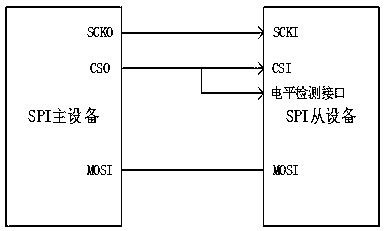DMA-based method for automatically defining ending of variable-length frame in communication among SPI devices
An inter-device communication and device technology, which is applied in the field of automatically defining the end of variable-length frames, can solve the problems of DMA reception errors, high processing performance, and lack of versatility, and achieves the effect of avoiding error accumulation.
- Summary
- Abstract
- Description
- Claims
- Application Information
AI Technical Summary
Problems solved by technology
Method used
Image
Examples
Embodiment Construction
[0018] The present invention will be further described below in conjunction with the accompanying drawings.
[0019] Such as figure 1 , a method for automatically defining the end of a variable-length frame based on DMA-based communication between SPI devices of the present invention, including a general SPI communication model composed of two devices with integrated SPI interfaces, with one SPI device in the communication model as the main device, Another SPI device is a slave device, the master device initiates communication, and the half-duplex data transmission direction of the slave device response is taken as an example.
[0020] The main device includes interfaces: chip select output signal (CSO), clock output signal (SCKO) and data output signal interface (MOSI). The slave device includes interfaces: chip select input signal (CSI), clock input signal (SCKI), data input signal (MOSI) and chip select level value change monitoring interface.
[0021] The method of the p...
PUM
 Login to View More
Login to View More Abstract
Description
Claims
Application Information
 Login to View More
Login to View More - R&D
- Intellectual Property
- Life Sciences
- Materials
- Tech Scout
- Unparalleled Data Quality
- Higher Quality Content
- 60% Fewer Hallucinations
Browse by: Latest US Patents, China's latest patents, Technical Efficacy Thesaurus, Application Domain, Technology Topic, Popular Technical Reports.
© 2025 PatSnap. All rights reserved.Legal|Privacy policy|Modern Slavery Act Transparency Statement|Sitemap|About US| Contact US: help@patsnap.com

